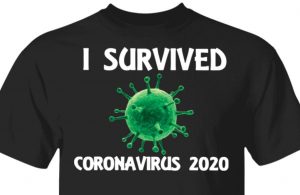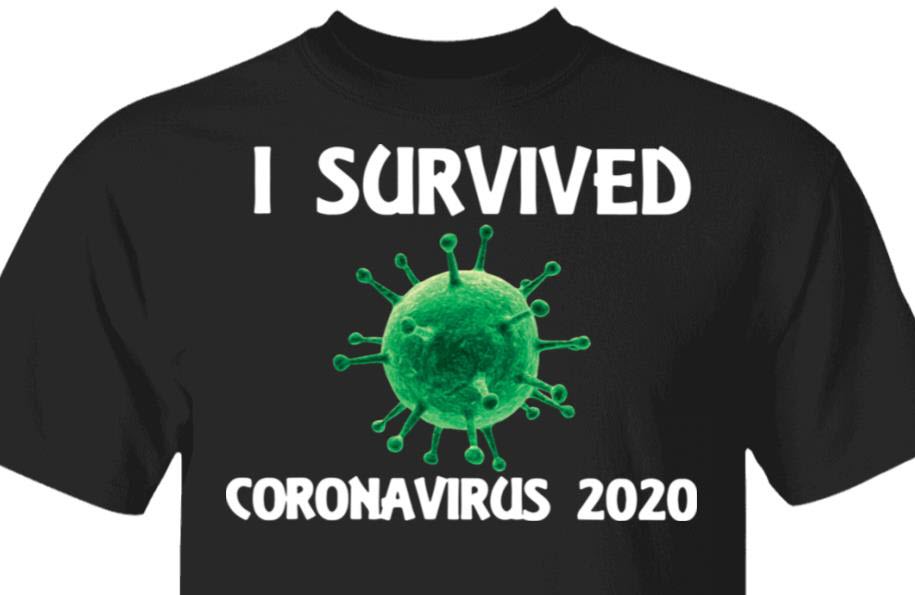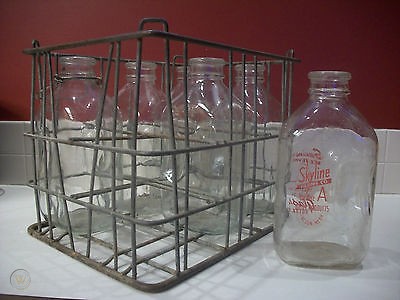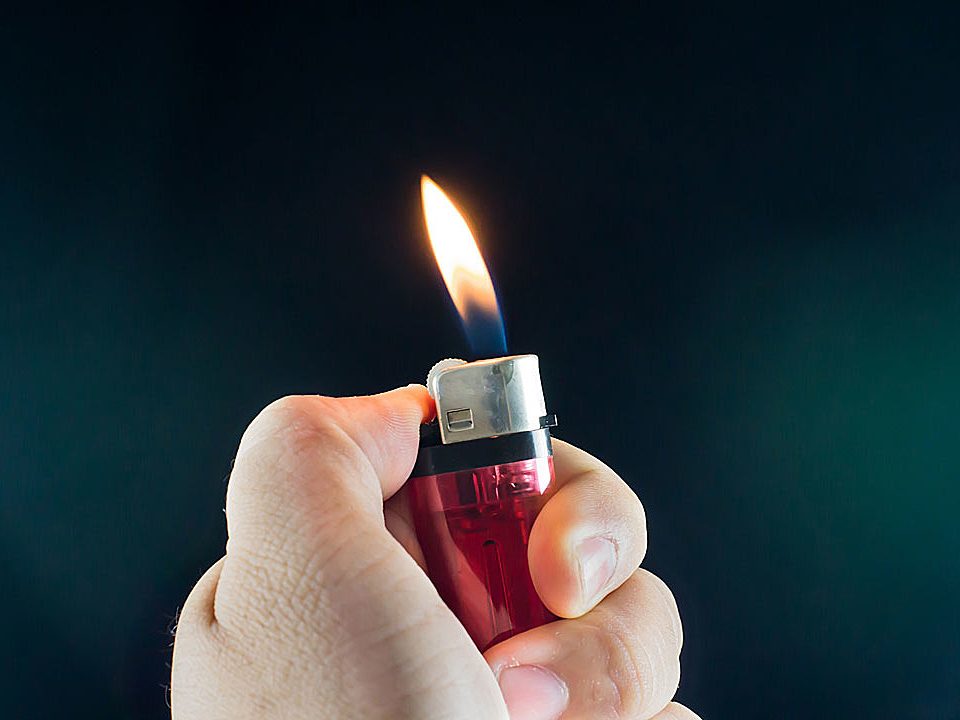Preparing Your Body for the COVID-19 Virus
Preparing Your Body for the COVID-19 Virus
 In February of this year, I caught a virus that made me sicker than I’ve been in years. For the first few days after the virus hit me, I had a fever that raged at night and eased up during the day. I slept on the couch on pillows that were stacked to keep me in an inclined position. I had to do that because in addition to the fever, I was coughing up mucus and was unable to lay flat. For the first few nights, I also had nightmares that bordered on hallucinations.
In February of this year, I caught a virus that made me sicker than I’ve been in years. For the first few days after the virus hit me, I had a fever that raged at night and eased up during the day. I slept on the couch on pillows that were stacked to keep me in an inclined position. I had to do that because in addition to the fever, I was coughing up mucus and was unable to lay flat. For the first few nights, I also had nightmares that bordered on hallucinations.
After a few days, I started feeling better, but my cough got worse. I had the cough for more than a month. By the time I recovered, the COVID-19 virus was everywhere in the news. The more I learned about COVID-19, the more I was convinced that my sickness in February was from that virus.
Before long, there were reports that people who caught and recovered from the COVID-19 virus could have developed antibodies that made them immune to getting the virus again. After I read about the possibility of developing antibodies, I had it in my mind that if I were tested, I would test positive for the antibodies.
In June, I donated blood at the Red Cross. By then, the Red Cross was testing all donated blood for the COVID-19 antibodies. I was anxious to get the results of the test from the Red Cross because I was convinced that I had the COVID-19 virus in February. To my surprise, the results were negative for the antibodies, which meant that I did not have the virus in February.
At the end of August, I had surgery at Mayo Clinic to correct a problem that had arisen after a previous surgery on my jaw that had taken place in November 2019. I was required to arrive at the clinic two days before the surgery, so I could be tested for the COVID-19 virus. At that time, I was also tested for the COVID-19 antibodies. The results of the tests showed that I did not have the virus, and that I had tested positive for the antibodies.
At first, I thought that the test result from the Red Cross must have been wrong, but then I remembered that a couple of weeks after I donated blood, I had caught what I thought was a cold virus. With that virus, I had sinus congestion, a cough, and I was fatigued. One person who noticed that I was coughing suggested that I get tested for COVID-19. My response was that I wasn’t having any trouble breathing and I didn’t have a fever, so I was certain that all I had was a cold.
I recovered from the virus the same way I have always recovered from a cold. The sinus congestion lasted for less than a week and the feeling of fatigue went away. The cough lingered for another week or two, but it wasn’t nearly as bad as the cough that I had in February.
A short time after I arrived home from Mayo Clinic, I talked to my cousin, Dr. Gene Couri. I told him about my sickness in February, the Red Cross results, my subsequent cold, and the Mayo Clinic positive antibody test. Dr. Couri is the smartest doctor that I know. He’s board-certified in three specialties: Emergency Medicine, Internal Medicine, and Pediatrics. He has worked in the OSF Saint Francis Hospital emergency department for more than 25 years.
After Dr. Couri asked me several questions about my sickness in February, he told me that he was fairly certain that I had the human metapneumovirus virus. The symptoms that are commonly associated with that virus include cough, fever, nasal congestion, and shortness of breath.
Since I am 63 years old, I fall within the age range of people who are more at risk for major complications and/or death if they get infected with the COVID-19 virus. While I may be one of those individuals who was already predisposed to recover from COVID-19 without any major complications, there are two factors that I want to share with you that I believe played an important role in my minimal symptoms and speedy recovery.
The first factor is that I have been taking a daily dosage of 5,000 units of vitamin D3 for more than 15 years. For several years, I treated with an out-of-state doctor who was a specialist in treating men who were over the age of 40. One of the first things he tested me for was my vitamin D3 level. He told me that there had been a study that most doctors didn’t know about that showed that people who have healthy levels of vitamin D3 are 50 percent less likely to get cancer. He also said that there were other studies that showed that people with healthy levels of vitamin D3 have stronger bones and are much less likely to get the flu than people who have low levels of vitamin D3.
The result of my initial vitamin D3 blood test showed that my D3 level was 11 ng/ml. My doctor told me that he wanted me to increase my D3 level to 50 ng/ml or more. He said that he did not want my D3 level to go above 80 ng/ml because anything over that level would be toxic. He started me on 10,000 units of vitamin D3 per day and later decreased it to 5,000 units per day. Earlier this year when I had my vitamin D3 level tested, it was at 45 ng/ml. Vitamin D3 is an over-the-counter supplement that can be purchased online or at a local store that sells vitamins.
One interesting thing that my doctor told me was that for most people, the sun is the main source of vitamin D3 and that since people who live in the Midwest don’t get much sun during the fall and winter months, their vitamin D3 levels are usually very low. Since most of my time is spent inside, I don’t get much sun during the year, so that’s even more of a reason for me to be monitoring my vitamin D3 levels.
You may have seen recent reports that have stated that people who have healthy levels of vitamin D3 have fewer problems with the COVID-19 virus. The fact that I have continued to maintain a healthy level of vitamin D3 is likely one of the reasons why the COVID-19 virus did not affect me in the same way that it has affected other people who are in their 60s.
The second factor that I benefited from is that as soon as I thought I had a cold, I immediately started taking triple doses of a supplement by the name of Super ViraGon, which is made by Baseline Nutritionals. After the lockdown occurred, I read about the benefits of Super ViraGon, which provides a person’s body with natural antipathogens that effectively fight off an infection.
Super ViraGon is a liquid tincture that includes fresh garlic, ginger root, olive leaf extract, oil of oregano, liquid zinc, and several other ingredients. While it smells and tastes nasty, it quickly ramps up a person’s immune system. The way you take it is by using a dropper to mix it with juice and water. I continued to take Super ViraGon for more than a week after my symptoms went away.
I’m sharing this information with you in the hope that you will ask your doctor to order a simple blood test that will show you what your vitamin D3 level is. I would bet money that if you’re not currently taking vitamin D3, the results will show that your D3 level is in the teens, just like it was for me. From what I’ve read and from my own experience, this is one of the steps that everyone should be taking to prepare their body to fight off the COVID-19 virus. The second step would be to order six bottles of Super ViraGon, so you have them available to take at the first sign of any symptoms.
There’s more that I want to tell you about being prepared for the COVID-19 virus. I’ll cover that next week.





2 Comments
Thank you! Interesting articles (this week on the Budesonide and above article on ViraGon. I have used Echinacea-Goldenseal tincture for years for virus /influenza. I have passed the Budesonide article on to family and friends.
[…] on what you can do if you are diagnosed with the COVID-19 virus. The titles of articles were Preparing Your Body for the COVID-19 Virus and Treatment Ideas for COVID-19. After I published the articles, I heard from a man who provided […]